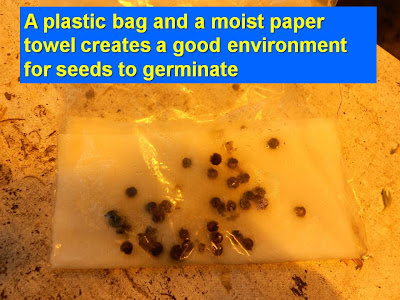Hi Dr. I'm new to growing but have reading lots of material because this new found hobby is becoming an obsession. Through some of my reads I usually find something about what is called beneficial bacteria. This has been of interest to me ever since I've first encountered it.
What can you tell me about these beneficials and are they necessary too maintain a beautiful garden with great yields? If so is there any productyou can recommend?
Thanks for your time Doc.
If you are interested in this topic, be sure to read my post on the
rhizosphere next.
I also suggest you read
my post about how to use beneficial organisms products
Thanks for your question. I think we all have a passion for growing. Most organisms in the world, maybe all, depend on other organisms to survive. Various plant, bacteria and fungus species have evolved beneficial relationships with each other especially in the soil.. For example, fungal species have small root like projections called hypahae that can absorb nutrients out of the soil more efficiently than a plant root. However, plants due to photosynthesis can acquire sugars easier than a fungus can absorb it. So, over time several type of fungal and plant species have created a mutualistic relationship where the plants give the fungus sugar to eat, and the fungus helps the plant get nutrients out of the soil more efficiently. In fact, 90 percent of all plant species have a relationship with one or more fungi which is termed mycorrhizal (Greek for fungus roots plural form is mycorrhizae). Evidence of this relationship with plants has been seen in fossil records from over 350 million years ago. There must be a benefit for something to persisit so long.
Maybe the best example of a mutualistic relationship between fungus and plants is with orchids. A lot of people like to grow orchids, but it is not easy to do. Many orchids need to have a specific species of fungus in the soil/medium where the seeds germinate and around the roots in order to germinate and grow. If an orchid breeder does not have the correct fungus (Mycorrhizae) than the orchid seeds will not survive to adulthood no matter how optimal the environment is. Orchids are very particular plants; most plants can grow fine without mycorrhizae if you make sure the pH is in the right range and you provide all nutrients in the optimal amounts in the fertilizer… I may be lazy but I would rather let the bacterial and fungus do the work with the plant roots…
Adding beneficial microorganisms may be a very important way to provide optimal nutrients with organic growing. With organic gardening you want to create an environment in the soil/medium where your plant and other organisms interact to get optimal results. I once convinced a friend to use, bat and sea bird guano to help him grow better. A week later I saw him and he came right up to me and got in my face, “My buddy said that stuff you gave me will get bacteria growing in my pots!”
I laughed and said, “I bet it will”
He seemed shocked, expecting me to deny it, or defend against his verbal onslaught. I explained that when growing organically, you want to cultivate bacteria in the soil. Bacteria are important in recycling and supplying nutrients to plants. There are thousands of beneficial bacteria species, some types of bacteria fix elements such as nitrogen, while the plants supply the bacteria with sugar (food) and a place to live. Many plants in the legume or bean family have little nodules (bumps) on their roots that provide a place to live for the bacteria. The bacteria get room and board and their waste product is nitrogen, which is usually the most limiting nutrient to plant growth. Something outdoor growers might want to know is that for centuries many cultures of people have planted legumes like beans, peas, clover, alfalfa etc. in their fields after harvesting their crops to add organic nitrogen for next years crops. If you later till (mix) the plants into the soil, that is called a green manure and will add nitrogen and organic matter to the soil, a great way to build up the soil for most plants. You could throw some clover or alfalfa seeds down after you harvest your plants and them mix those plants into the ground in the spring before you plant your crop.
Bacteria are also important to plant growth because when bacteria find organic material to digest they secrete enzymes to dissolve whatever it is they are metabolizing. These enzymes benefit plants by making nutrients available that without the bacteria would not be. Lastly, bacteria can also be used to fight off insect attack. The only organic insecticide called BT is actually derived from a bacterium named Bacillus thurengiensis, a close relative to anthrax. This bacteria makes an insecticide that is widely used as an organic insecticide. Not only that but the gene that makes this insecticide has been inserted into most crop species so that the plants make the insecticide themselves, and don’t need to be sprayed with petrochemicals during the growing season.
I have written more about beneficial bacteria(
LINK to post with products that have beneficials) and will be testing some products such as roots organics by Auroa to see how these beneficial microorganism help plant growth, stay tuned…
Good Growing,
Dr. E.R. Myers















